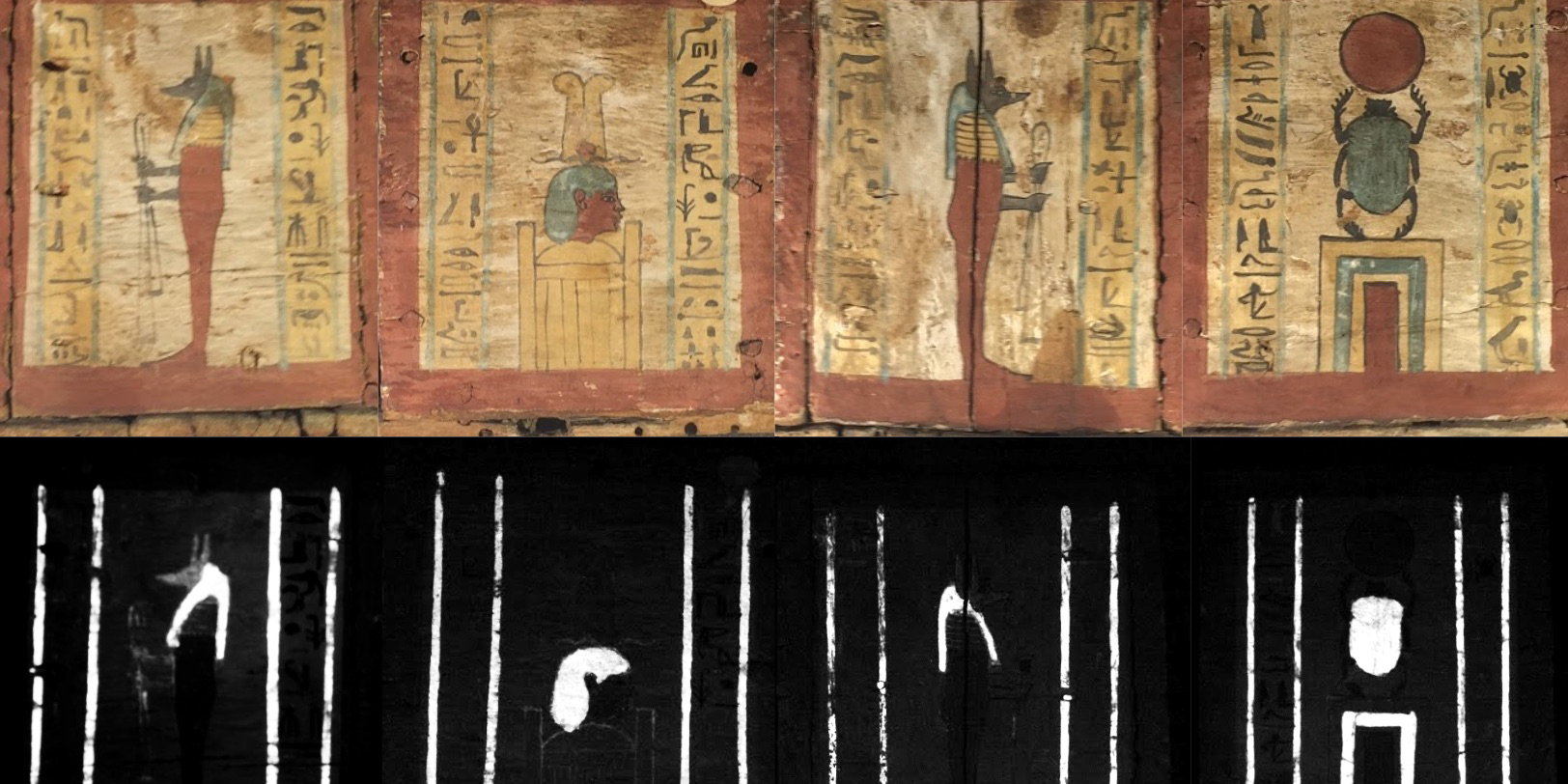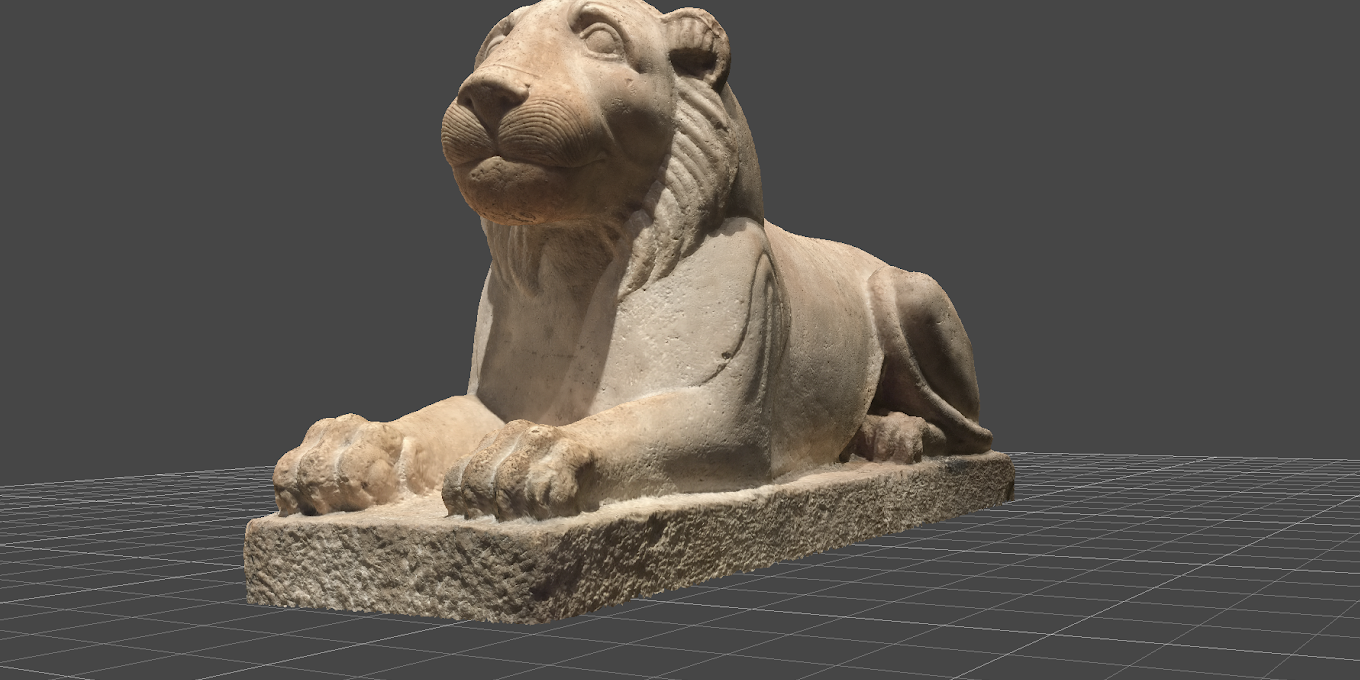ONE-MA3 – Day XIX: Face-to-Face With 3000-Year-old Artifacts!

By Sophia Mittman ’22
Usually, most ancient artifacts can only be seen being displayed behind glass under scattered spotlight, or even from afar behind a rail. Today however, there were no boundaries when it came to analyzing thousand-year-old Egyptian sarcophagi, relic boxes, and statuettes (besides the obvious restrictions of not touching the objects). Each of our four groups ended up analyzing and characterizing one object each. At first the decision of choosing which artifact to analyze was surprisingly difficult. The two large sarcophagi heads were tempting; they were huge, like the ones you would imagine seeing in a documentary on ground-breaking Egyptian excavations. They were colorful and covered entirely with Egyptian paintings, thanks to the dark and dry environment of tombs that they had remained in for thousands of years. How could one turn away from the opportunity to work on such iconic Egyptian artifacts? But, one of the downsides we foresaw was that since the sarcophagi are so large, it would be difficult and time-consuming to obtain a thorough 3D model using photogrammetry and to do VIL (visible induced fluorescence) on it to determine whether or not Egyptian blue existed on its surface, given the time that we had (in the end, it all worked out for the groups that worked on them!). The other two objects were much smaller: a statuette of the Egyptian god Osiris that, like the sarcophagi, still retained a complete layer of painting and hieroglyphics on its surface and a cubical relic box that was bare on the insides but had distinct paintings on all four of its outer sides.

Taking VIL (visible induced luminescence) photographs of one of the sarcophagi heads
Even though it was small, because it was the oldest artifact of the four options, my group opted to choose the relic box (which is about 3000 years old!). On each of the four sides, there was a painting of an Egyptian god with hieroglyphics running down the side edges and a border of red pigment around each face. Two profiles of the god of the afterlife, Anubis (depicted and known by a dog’s head), were painted on two opposite faces of the box. On the remaining two sides was a classic Egyptian scarab beetle holding a sun above it to represent the sun god Ra and the god of death, Osiris. Our first task was to search for Egyptian blue on the relic box. Just by looking at the paintings visually, we could see details painted in light blue in various locations on all sides, which was an interesting find because many times, over thousands of years, Egyptian blue fades in visible color but still retains all of its crystalline structures and chemical compositions. Our next step was to confirm whether or not this light blue was authentic Egyptian blue or not!

Our group’s VIL and photogrammetry set-up for the ancient relic box
After setting up a table with cardboard boxes, strong LED lights, and a full-spectrum camera, we proceeded to take pictures of our relic box, rotating it about 20 degrees at a time in between each photograph. After taking a visible light photo, we would change the settings on the camera, attach a filter that doesn’t let any visible light through it (only infrared wavelengths), and then take another photo while blasting the object with infrared-free LED lights. With this VIL technique, we were immediately able to distinguish where Egyptian blue was on our artifact—and fortunately, it was there on all four sides! All of the light blue that we had seen in visible light was in fact Egyptian blue, but interestingly, some of the darker markings on the surface proved to be Egyptian blue as well, only with a slightly weaker strength of luminescence compared to the luminescence of the light blue pigment. We deduced that perhaps in some parts, Egyptian blue could have been mixed with another non-fluorescing pigment, which would cause it to glow less. In addition to performing VIL on our artifact, we also used X-ray fluorescence (XRF) to determine the elements within each color of pigment: red, white, black, blue, and yellow. As we expected, both the red and yellow contained iron, the black was charcoal, the blue was indeed Egyptian blue, and the white was lime, an old friend of ours. All in all, it was fascinating to put our new skills of VIL and XRF to the test by working as actual archeologists on ancient artifacts that had not been thoroughly analyzed using these kinds of technologies before.

Our final VIL results showing where the Egyptian blue is!
Share on Bluesky


